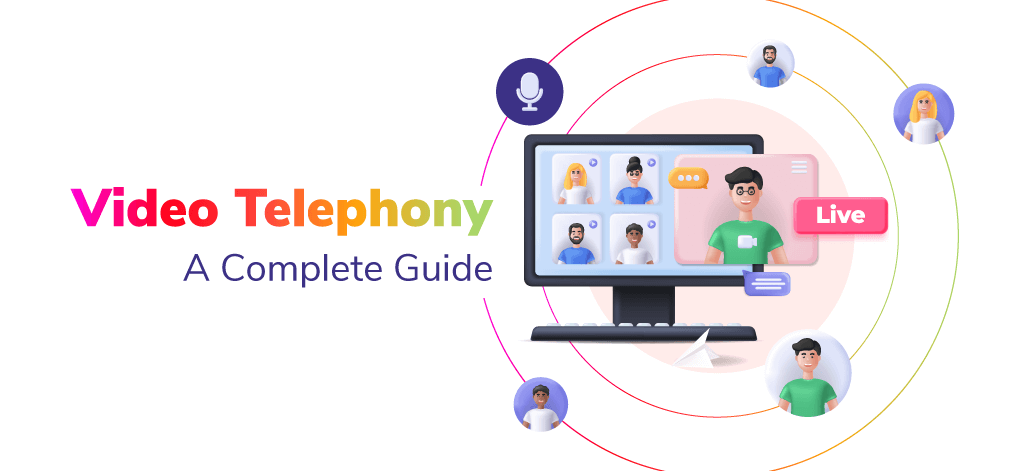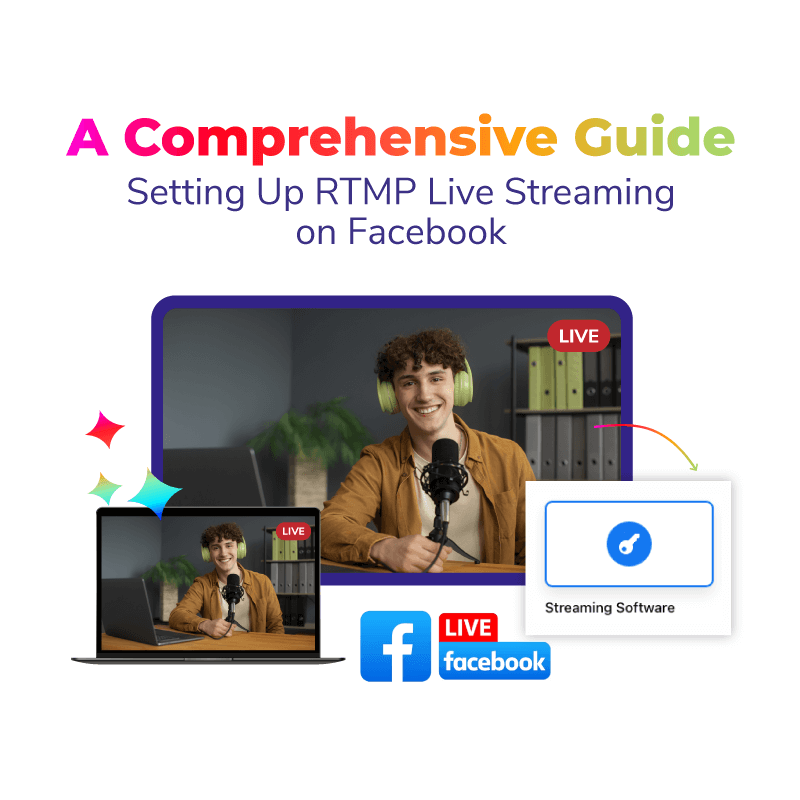Video telephony is a perfect way to reach out to a loved one who lives miles away. Gone are the days of traditional ways of teleconferencing. Nowadays, in the world of Web conferencing, where the web is taking over every little technical thing, we have almost experienced a revolution in technology.
Video Telephony has always been in style, from the day of its launch. The COVID made people realize its importance. Being in the same room with your coworkers was no longer an option. It emerged as a clear winner for connecting. All of these factors combined to create a surge in demand for simple video conferencing that allows customers to join from any device with the touch of a button.
In this article, we are going to delve into the world of video telephony. What is it? How does it work? What are the needed elements? What are its advantages? We’ll discuss all these topics in detail. So without further ado, let’s start:
Table of Contents
What Is Video Telephony?
Videotelephony refers to modern video conferencing and is almost similar to it with one small difference. It is a technology that allows you to transmit audio and video signals in real-time. This technology is very helpful in connecting people across geographical boundaries.
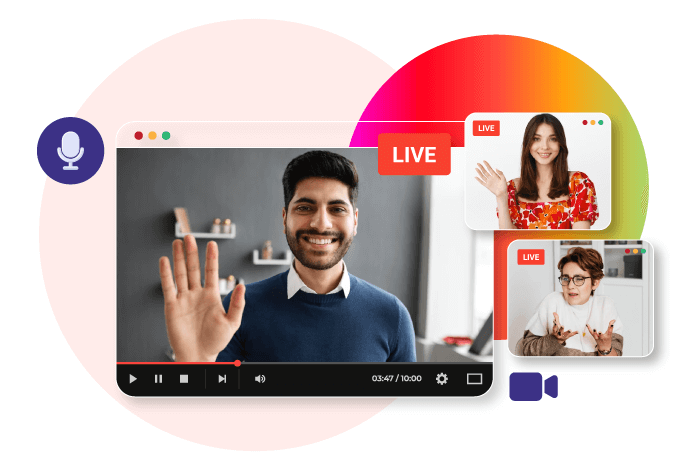
Basically, it’s a setup of a telephony model, in which analog signals are sent from a video camera along with attached microphones. These signals are later translated into digital information inside a laptop, mobile device, or computer. All the processing is done via a codec. Well, Codec stands for “Compression and decompression.”
How Does Video Telephony Work?
In the same way as any workplace phone, users must dial an extension to reach an extension. SIP servers in the network cloud transform the phone numbers into IP addresses, and audio and video are routed to the called party’s device.
In a hosted PBX, video telephony users have access to the same call control tools as audio callers, including video hold, video transfer, video mute, and multiparty conferencing.
In simple words, video telephony is done using a codec. However, codecs are algorithms that compress outgoing data, whether they are hardware-based or software-based. As a result, information can be transmitted quickly over telephone connections. The codec then prepares the incoming data for viewing after decompressing it. A multipoint processing unit or bridge (also known as a multipoint video conferencing unit, MCU) is used when multipoint conferencing is necessary.
Finally, video telephony is integrated into the voice telephony network and infrastructure, so making a video call is as easy and reliable as making a phone call.
Connect with the Industry's Most Experienced
Live Streaming Service Providers.
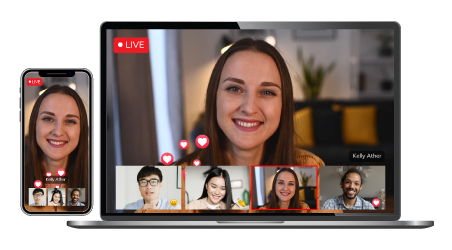
What Are The Equipment Requirements For Video Telephony?
Well, there’s no need for an expensive setup for video telephony. It really does not require any infrastructure or advanced technical assistance. Video telephony can be easily run on any personal device. You only need a basic setup for this, which includes,
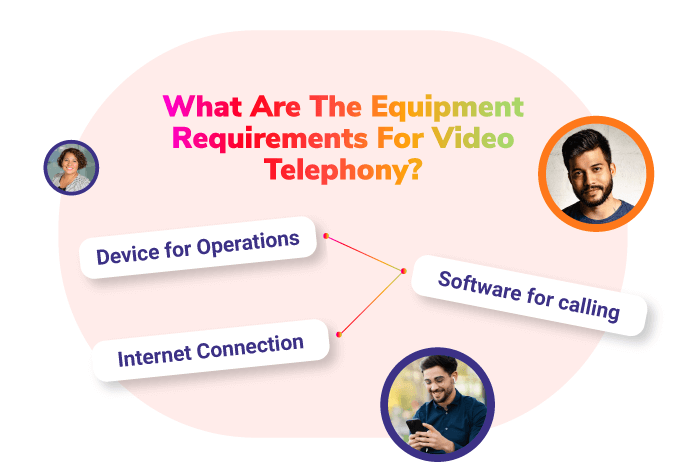
- Device for Operations: A mobile device with iOS or Android compatibility is needed for video telephony. Ensure that the device has a built-in webcam or an add-on webcam for extra security.
- Software for calling: Most software is available online. Google Chrome, Mozilla Firefox, Safari, and Microsoft Edge are some of the browsers you can consider. Also, know that Mac OS and Windows are compatible with these browsers.
- Internet Connection: High-speed internet connectivity with good bandwidth is all you need to complete the setup. Make sure that you have stable streaming because an unstable internet connection can disrupt the connection. And also impact the video quality.
Let’s Find The Difference Between Video Telephony And Video Conferencing
Are you always confused about the difference between video conferencing and video telephony? In this section, we have covered the differences between them. So let’s start discussing.
Video Telephony
Video Telephony is a communication technique that allows people to engage in real-time with voice and video across a long distance. Individuals or groups may engage with one another via video conversations, delivering a more immersive and intimate experience than typical audio-only chats. This technology has grown in popularity and is used in many sectors of daily life, including personal, corporate, and healthcare contexts.
Video Conferencing
Video conferencing, where participants meet in a specific room equipped with cameras and modern technology. This is indeed a popular method for business events. However, due to the high cost of creating a group environment, including the positioning of microphones and speakers, lighting, and cameras, not all video conferencing rooms are equipped with video conferencing infrastructure.
Most video conferencing is still done via ISDN, with a cost per minute. So the more an organization uses ISDN video conferencing, the more expensive it becomes. Video conferencing is not a financially viable option, nor does it provide the flexibility and ease of use benefits that are increasingly important in today’s hybrid and distributed work environments.
Significant Benefits Of Using Video Telephony
When discussing the benefits of video telephony, know that there are numerous benefits. Here are a few of the top benefits of video telephony.
1. More Engaging if Compared to Audio Telephony
Have no second thoughts about the engagement in the case of video conferencing. It is more engaging than audio telephony. Users feel more comfortable and connected during video calls than during audio calls. The reason behind this engagement is that a lot of information, thoughts, and ideas can be shared. Whereas in audio calls, eye contact, body language, and physical gestures are missing. That’s why this gives us a chance for more connection.
2. Efficient and Effective Methods For Business
Video Telephony has reduced the need for daily interactions. In the past, even for small things, we had to take out valuable time for in-person meetings. It has proven to be an effective and efficient way to avoid travel expenses and, of course, a time savior. Ever experienced how an hour of meetings with suppliers or clients can take up your entire morning? Therefore, video conferencing is one of the most convenient and sustainable ways to communicate.
3. Enhanced Ways of Communication
As per many research studies and reports, it is claimed that humans understand visual information quickly; visual memories are the strongest memories, and with video telephony technology, this can be easily availed of. Also, according to studies, a person understands visual communication better than text or audio content. Even a survey has shown that it increases the effectiveness of communication up to 60,000 times quicker than any other way. Simply put, this means that if you use video telephony for business, you will probably remember the information that was discussed during the call.
4. Increased Productivity
One of the greatest benefits that video telephony has offered is increased productivity. In the world of fast-moving technology, everyone works remotely, and as a result, video calls are in trend. However, companies now prefer video calls to start the day and discuss the target agenda. This has eliminated the need for a daily commute. Think about wasting the first half of the day traveling for a one-two -hour meeting. Therefore, video telephony has allowed us to utilize our time on other important tasks.

5. Improved Attendance
Sometimes, it gets hard to cooperate with busy work schedules and get the management together for the video meetings. Videotelephony provides the privilege of being flexible while boosting the attendance rate among employees. People from different zones can easily attend the meeting without any hassle. Also, there is software that assists with recording the meeting for future reference.
6. A Systematic Structure
Videotelephony provides a systematic structure, as the start and end times for video calls are usually scheduled in advance. This has increased productivity in organizations, businesses, and large companies. Now, there is no or less time for idle conversations among the employees. Also, they’re more likely to stick with the goals of the day as they know that the meeting’s about to end.
Closing Thoughts
The word teleconferencing isn’t only about telephone calls anymore. The way we used to communicate has completely changed with so many teleconferencing types emerging. By the end of this article, we have explored the world of video telephony. It provides a systematic structure along with improved engagement and connection. Consider the above-mentioned topics if you need any knowledge about video telephony. Undoubtedly, the introduction of video telephony has made the process of communication much easier.
I hope you like the blog! Thank you for reading.
Frequently Asked Questions
Video Telephony can be defined as a complete duplex setup of telecommunications, which allows the transfer of data in two different directions at the same time. It allows participants to hear and see each other simultaneously.
The purpose of a video phone is to transfer the two-day data transfer of audio and video data on a call
The first video phone was introduced in 1927 And it was nearly the earliest version of it, when AT AND A created the television-videotelephony version. Earlier, we called it ionophore.
Video conferencing is the meeting of people, in a room with proper lighting and microphones or cameras. The advantage is increased communication. Improved connection, and increased attendance.
Connect with the Industry's Most Experienced
Live Streaming Service Providers.















